
 |
|
|
#1 |
|
All the news that's fit to excerpt
Name: newsie
Location: who knows?
Join Date: Jun 2008 Motorcycle(s): only digital replicas Posts: Too much.
|
[cycleworld.com] - 2023 Kawasaki Electric Motorcycles and 2024 Hybrid
Kawasaki used the EICMA show to show off two of its upcoming electrics, a hybrid due out in 2024, and a peek into hydrogen technology.
Click here to view on their site. 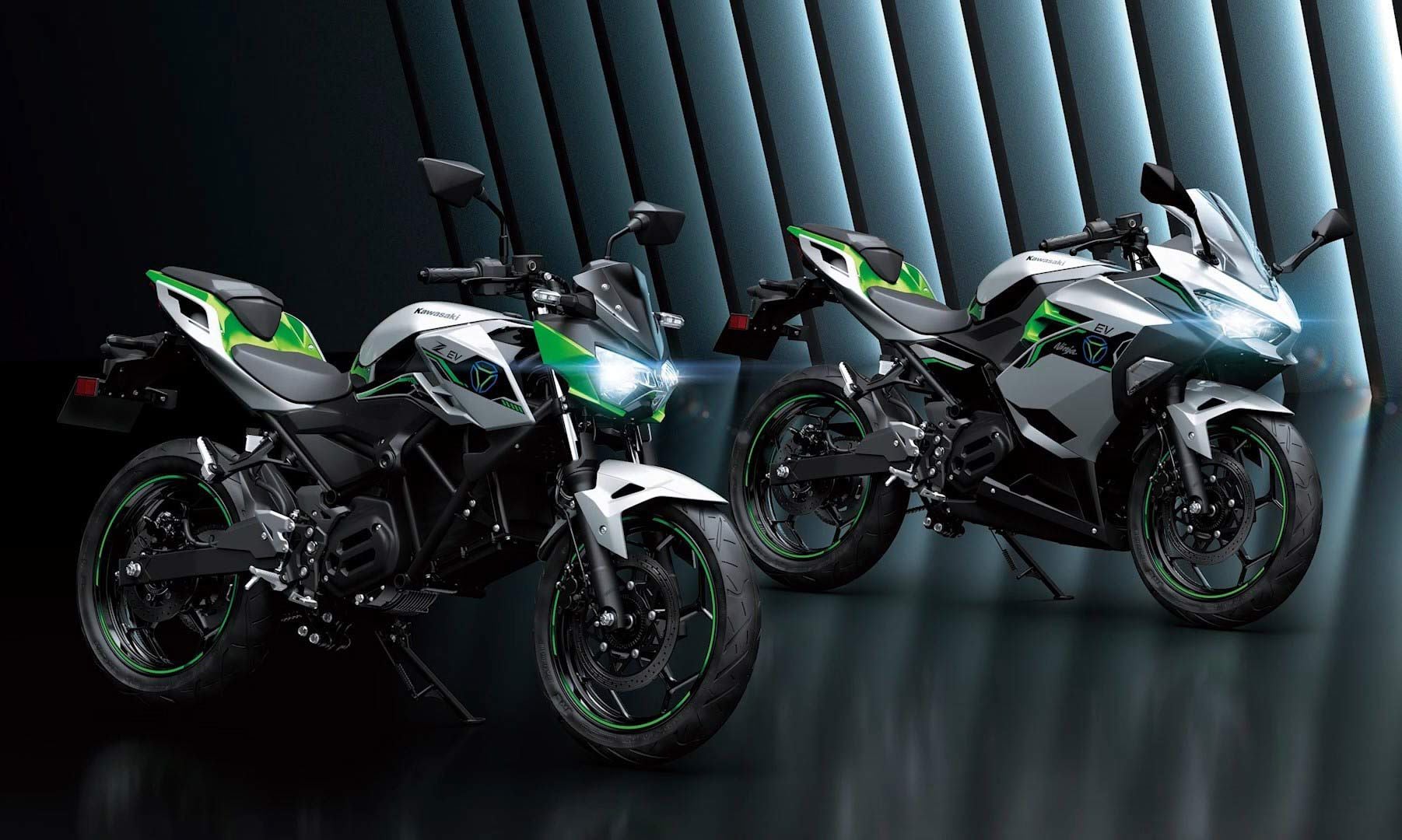 Kawasaki’s two electric motorcycles in naked-Z styling and faired-Ninja styling will go on sale in 2023. (Kawasaki/)Kawasaki may not have launched as many new models at EICMA as some of its rivals, but the company certainly kept things interesting. Kawasaki primarily used the show as a platform to reveal more about its plans for a future range that will be as environmentally green as the brand’s signature paintwork. Hiroshi Ito, President of Kawasaki Motors, was at the show to unveil the latest update on electric motorcycle plans that have been drip-fed to the world over the last couple of years. Finally, both the naked “Z” and faired “Ninja” versions of the company’s planned pure electric models, due in showrooms next year, were on full display. Although detailed specifications weren’t revealed, Kawasaki’s 2024 “HEV” hybrid bike was also given a public outing. 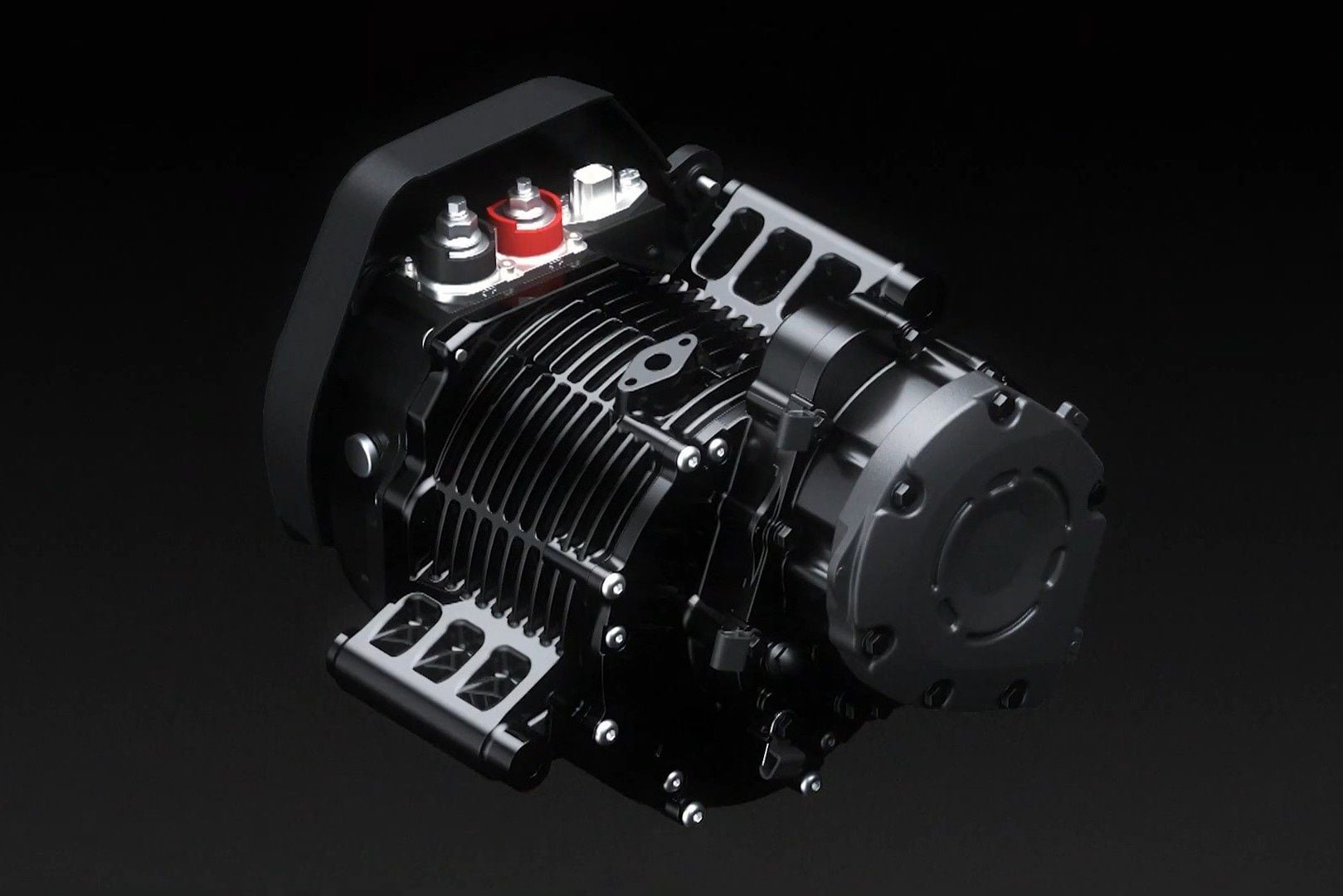 The 11kW motor that will power Kawasaki’s first two electric motorcycles. (Kawasaki/)The two electric models were officially confirmed as 2023 production bikes. Kawasaki has yet to reveal their final names, simply referring to the naked version as the “Z-family” model and the faired version as the “Ninja-style” bike. Both share the same underpinnings, with a steel tube frame and an 11kW (15 hp) electric motor; in Europe, that* makes them legal for learners to ride on the street. Dual batteries mounted in a box under the tank give a total capacity of 3kWh and feed an electric motor mounted where the transmission would normally be. This motor drives the rear wheel via a single reduction gear, unlike Kawasaki’s earlier electric prototype, which used a conventional four-speed gearbox. The single-ratio transmission and electric motor eliminate any need for a clutch or gear lever, but Kawasaki has opted to keep the rear brake foot-operated, as on a conventional motorcycle rather than moving it to the now-bare left handlebar, where a scooter’s rear brakes are typically found. 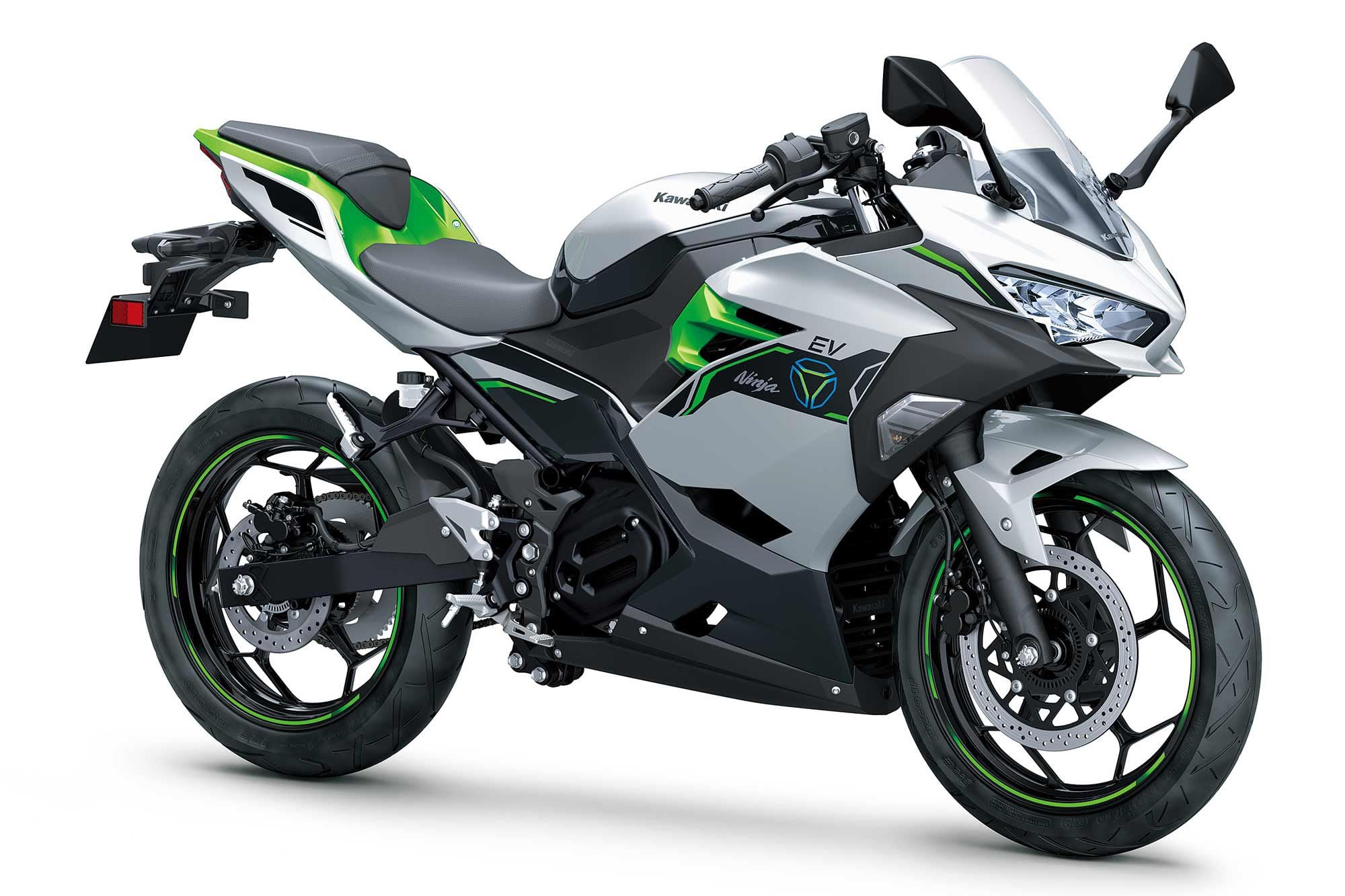 There will be two styles of motorcycles in Kawasaki’s initial E range, this is the faired Ninja-style model. (Kawasaki/)Both the Z and Ninja models borrow their bodywork from existing machines, the Z400 and Ninja 400 respectively, with the exception of the fuel tank; that now-unnecessary part is replaced by a cover panel hiding the top of the battery. The frame is a simple steel-trellis design and the swingarm a box-section unit, while the fork and wheels are off-the-shelf parts from Kawasaki’s existing lineup. By sharing components, Kawasaki will hopefully be able to keep prices low when the bikes reach dealers at some stage next year. 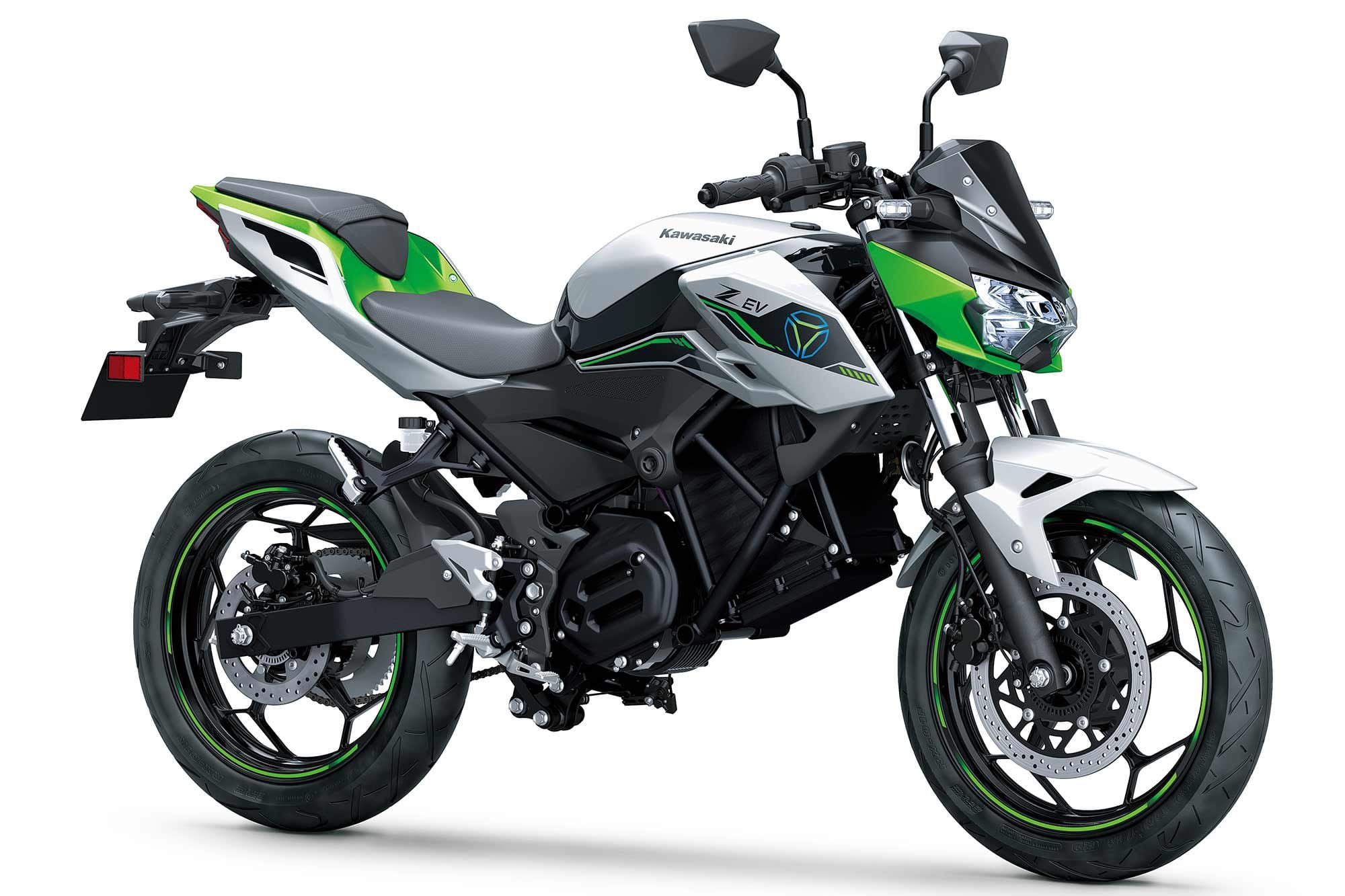 The other option will be a naked Z-style machine. (Kawasaki/)We’ll have to wait a bit longer for the next step in Kawasaki’s electrification plan, which comes in 2024 with the launch of the hybrid model that was shown in near-production form at EICMA. Currently called simply the HEV, the hybrid is another Ninja-style bike that takes elements from the Ninja 400, this time including its parallel-twin engine. It’s bolstered by an electric motor, with both the electric powertrain and the combustion engine driving through a semi-automatic transmission operated by buttons on the left handlebar. Other features include a “walk” mode, allowing the electric motor to be used to manoeuvre the bike at low speed, and a switch that moves the transmission into a fully-automatic setting. 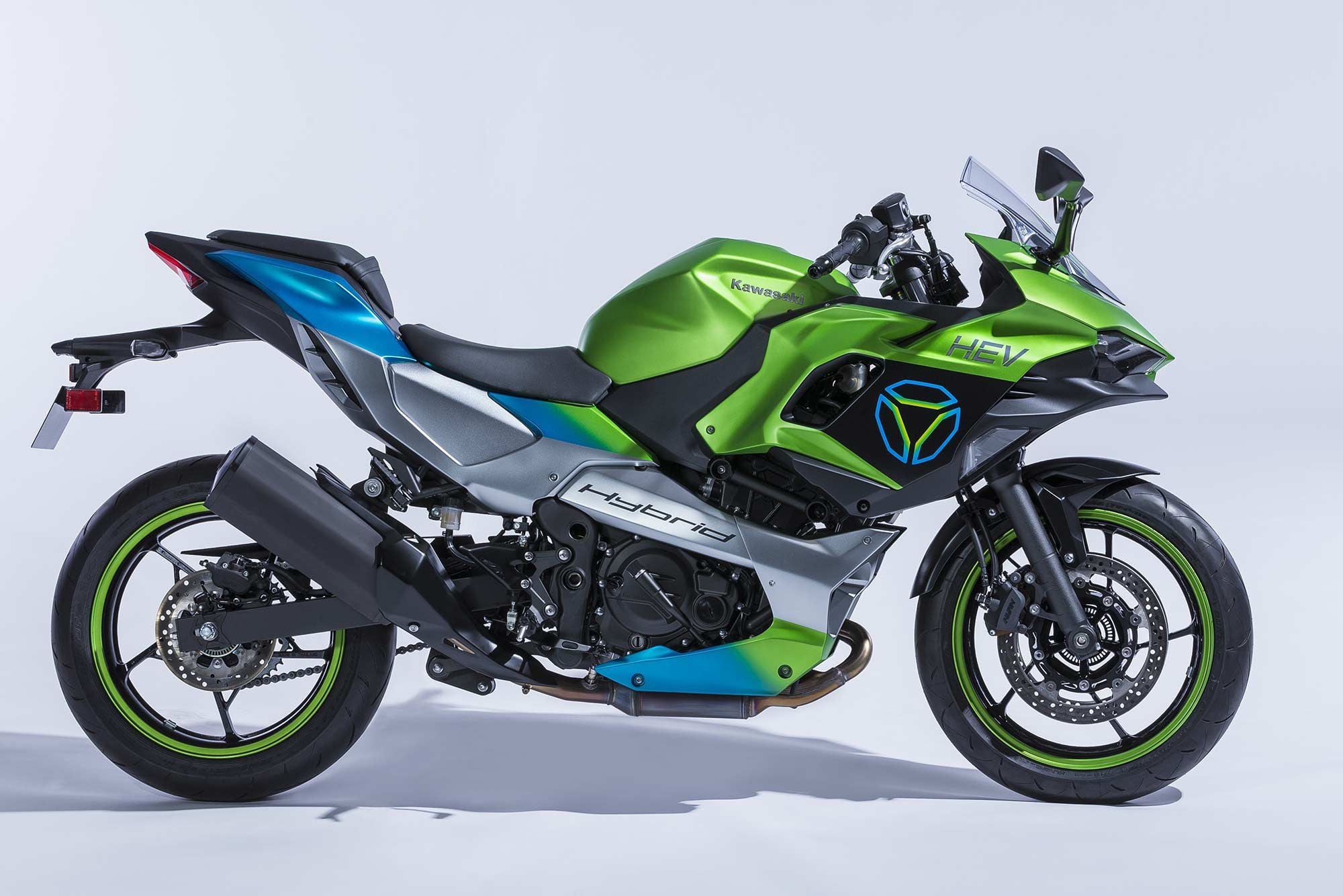 Kawasaki’s plans for its upcoming hybrid, are for the bike to be released in 2024. (Kawasaki/) 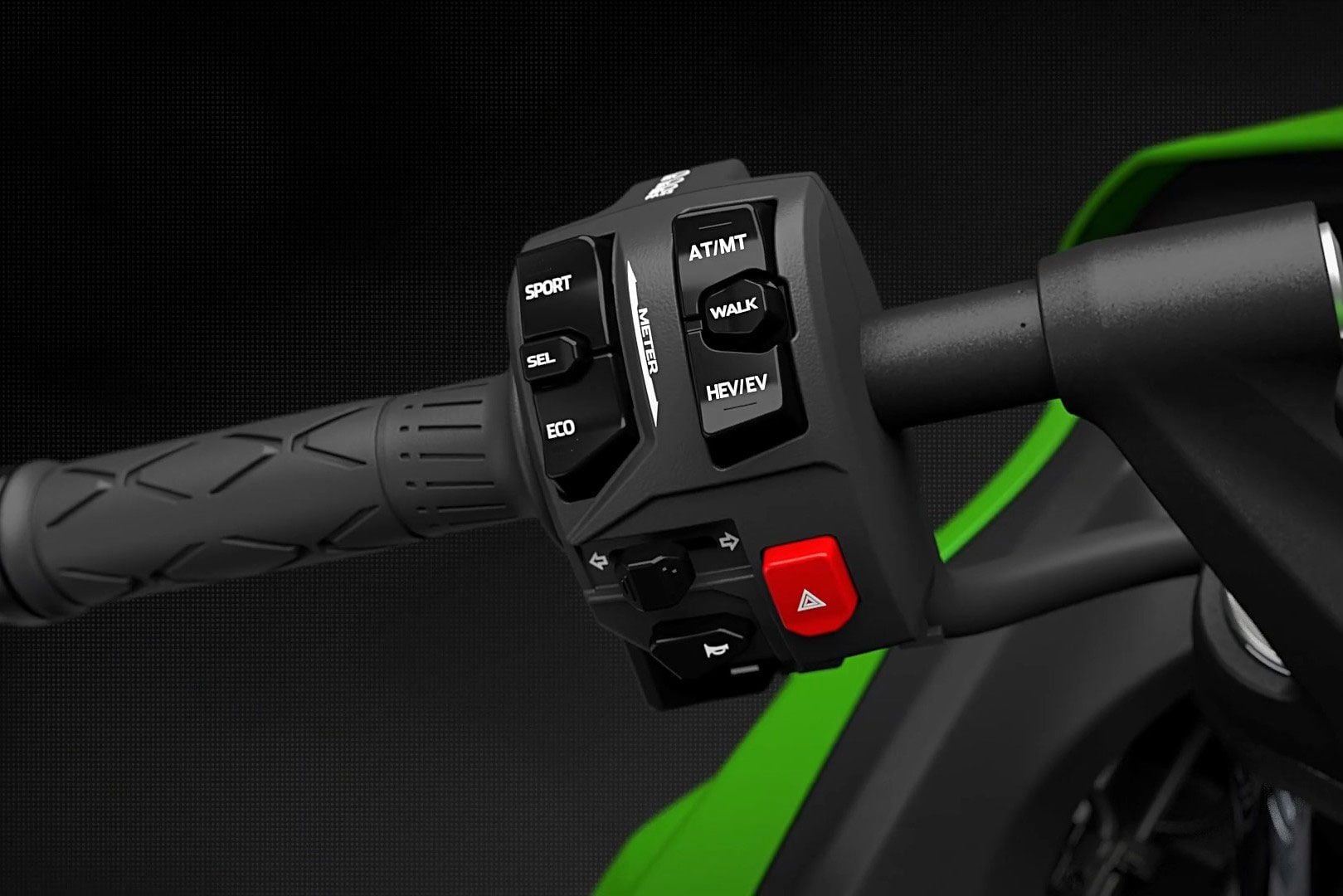 On the left handlebar, riders will be able to select multiple drive modes. (Kawasaki/)On the right handlebar, there’s a more intriguing button marked eBoost, a name Kawasaki trademarked some time ago. This is intended to engage an additional power mode, harnessing both the electric motor and combustion engine together. Dual powertrains mean the bike can operate in pure-electric mode for short low-speed city trips, using a relatively small battery pack mounted under the seat, or in pure gasoline mode while cruising, and recharging the battery as it goes. For maximum fun, both are used together, giving 650cc-class performance. 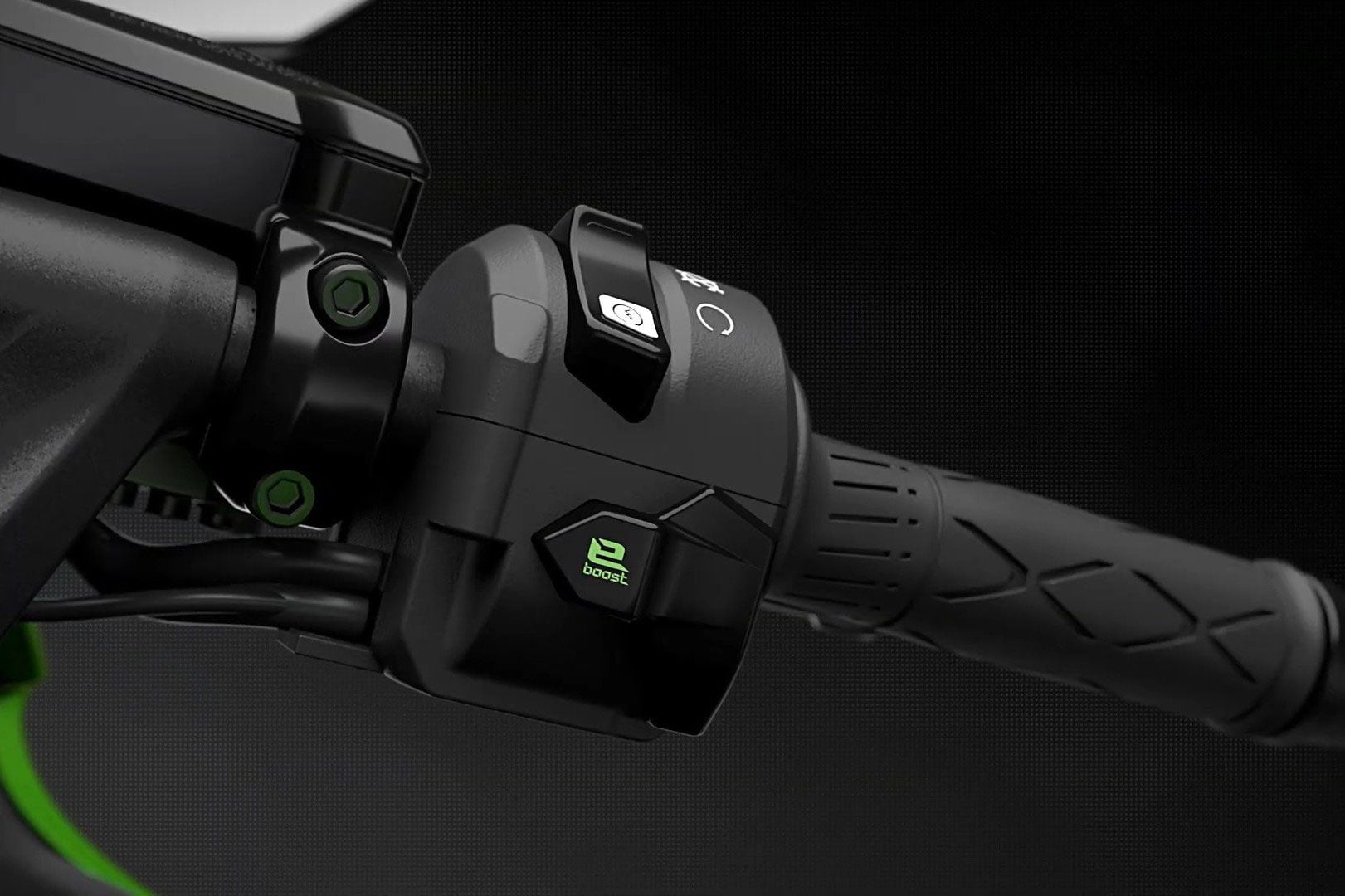 The patented eBoost button will combine internal-combustion power and electric power to provide the combo’s maximum output. (Kawasaki/)Kawasaki’s most forward-looking project is its hydrogen-fuelled combustion engine. The prototype engine itself was on display at EICMA, and Kawasaki provided images of what a bike using* it might look like. The engine is a derivation of the Ninja H2?s supercharged unit, but modified to run on hydrogen rather than gasoline. Yhat means fitting direct-fuel injection, as the hydrogen needs to be added at high pressure after the valves have closed, and the supercharger helps ensure there’s enough air in the combustion chamber to get a suitable oxygen/fuel ratio for a clean, efficient burn. The main exhaust should be water vapor, although hydrogen combustion engines aren’t quite “zero emission” as there will also be oxides of nitrogen in the exhaust. 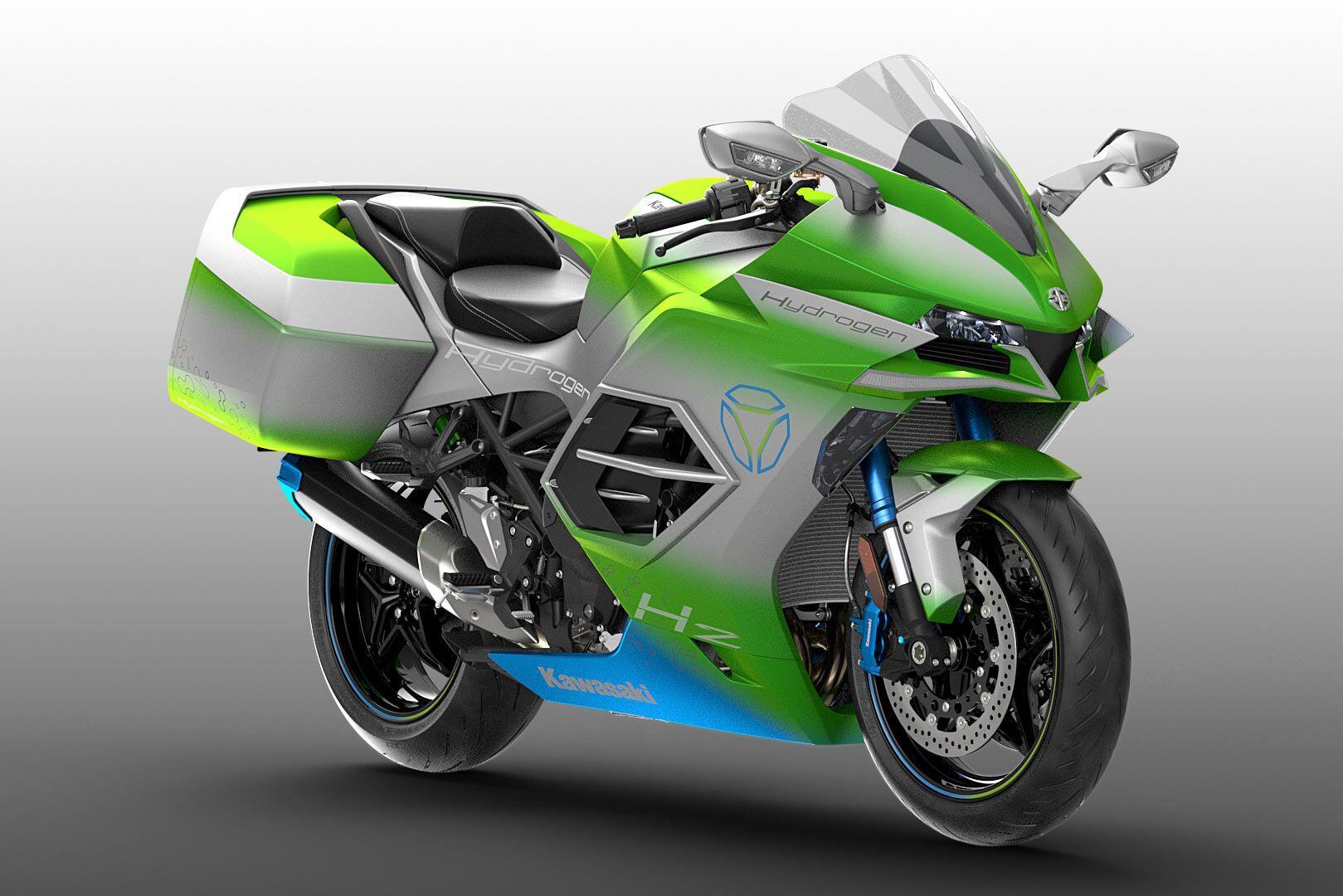 Further in the future, Kawasaki has plans to develop hydrogen power with a supercharged H2-based machine. (Kawasaki/)Images of the bike show its hydrogen stored in canisters in the rear. That’s potentially a result of Kawasaki’s tie-in with Yamaha and Toyota on hydrogen-fuelled combustion-engine development. Toyota revealed cylindrical hydrogen canisters looking much like the Kawasaki ones earlier this year, with the intention of using them like swappable batteries in Woven City, an entire community that Toyota intends to build at the foot of Mount Fuji. The idea is to have hydrogen canisters available at vending stations, and to power small hydrogen fuel cells for electric devices and vehicles. 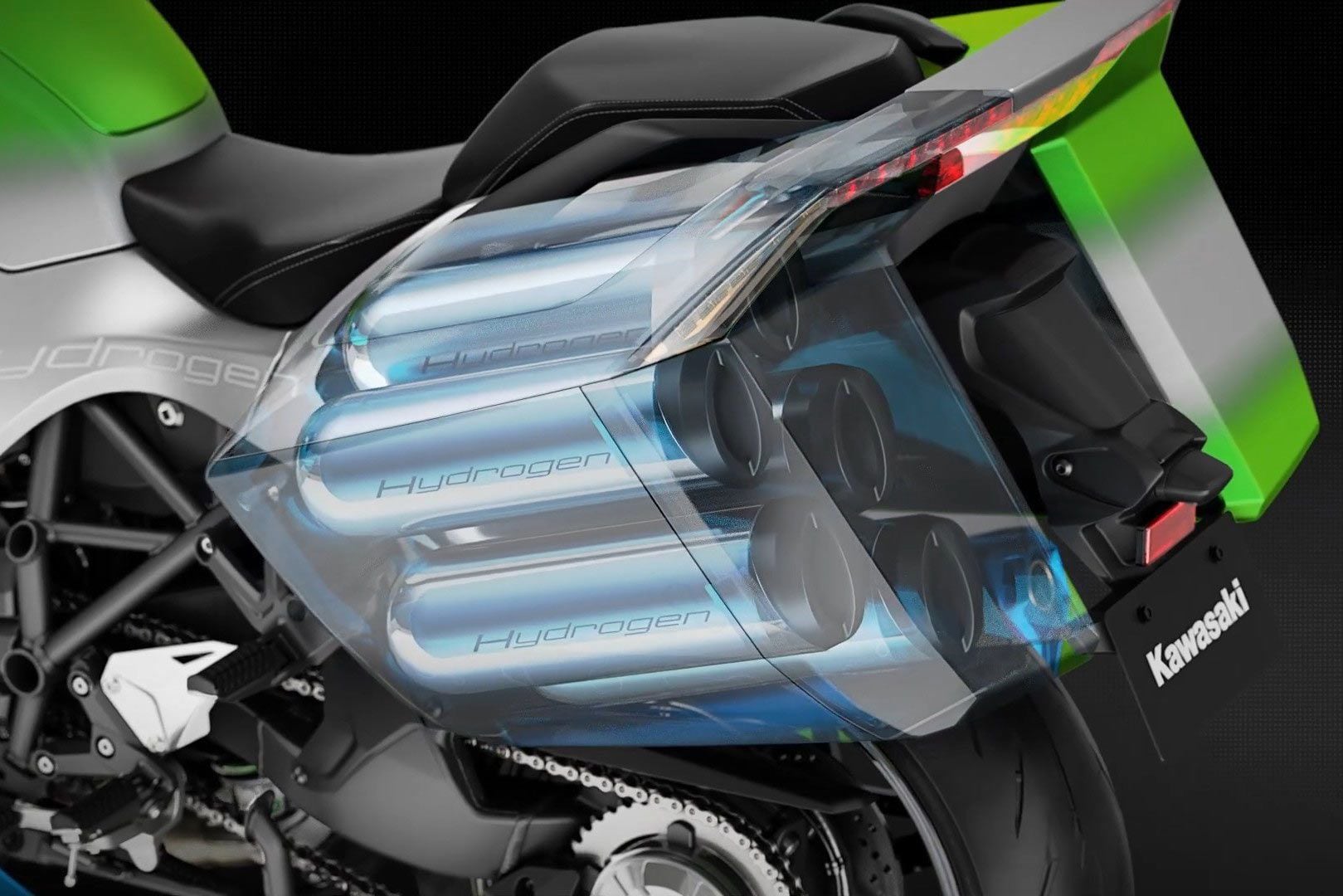 Kawasaki is currently working with Yamaha and Toyota to create a swapable hydrogen canister standard, allowing riders to switch out the canisters at vending stations. (Kawasaki/)
__________________________________________________
I'm a bot. I don't need no stinkin' signature... |
|
|

|
 |
 Similar Threads
Similar Threads
|
||||
| Thread | Thread Starter | Forum | Replies | Last Post |
| [visordown.com] - Kawasaki electrics to go on sale in 2023, hybrid in 2024 | Ninjette Newsbot | Motorcycling News | 0 | November 8th, 2022 07:30 AM |
| [cycleworld.com] - Kawasaki Electric and Hybrid Prototypes Break Cover | Ninjette Newsbot | Motorcycling News | 0 | August 16th, 2022 03:41 PM |
| [motorcyclistonline] - Can-Am’s Electric Motorcycles for 2024 | Ninjette Newsbot | Motorcycling News | 0 | August 14th, 2022 03:14 AM |
| [motorcycle.com] - Can-Am to Produce a Range of Electric Motorcycles in 2024 | Ninjette Newsbot | Motorcycling News | 0 | April 20th, 2022 11:35 AM |
| [visordown.com] - Honda to launch three electric motorcycles by 2024 | Ninjette Newsbot | Motorcycling News | 0 | April 26th, 2021 02:15 AM |
|
|